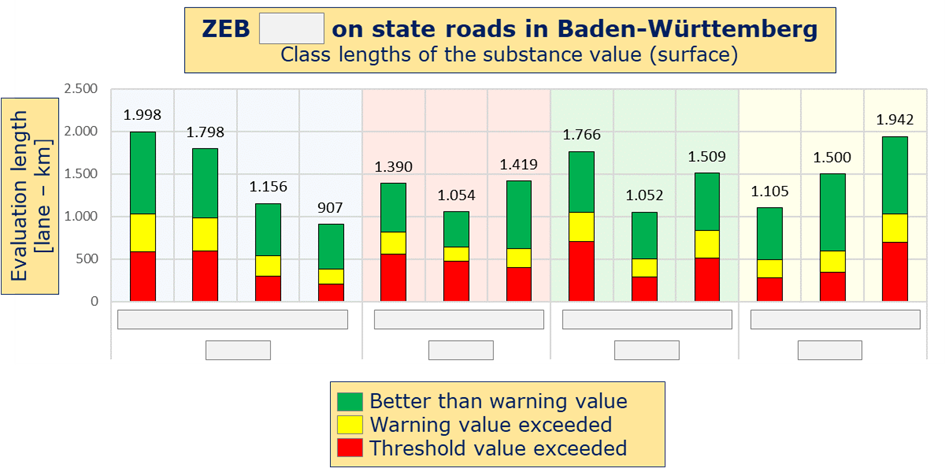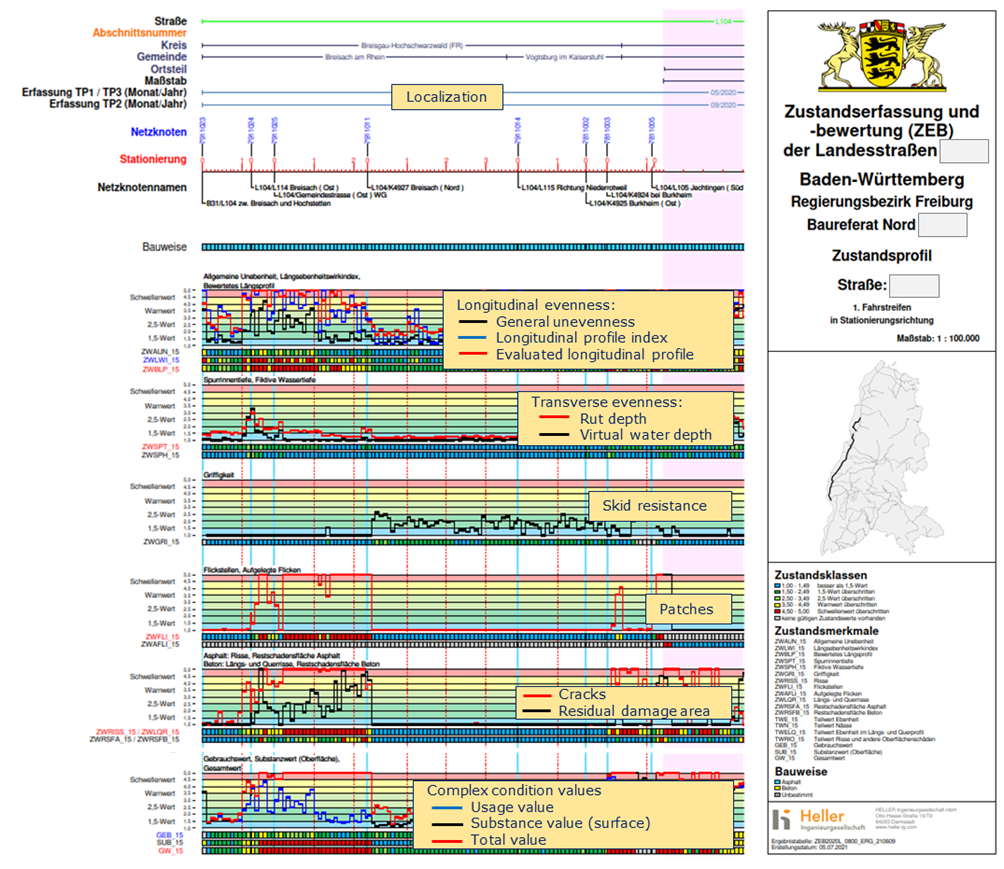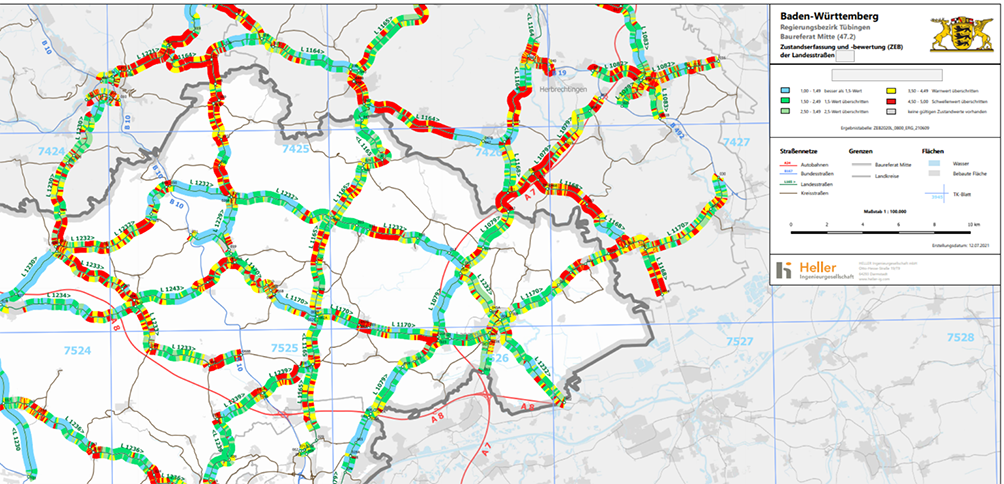
Asset Management Manual
A guide for practitioners!

Asset Management Manual
A guide for practitioners!
Although ZEB projects have been regularly performed in the area of federal trunk roads since 1992, and a few years later in the area of state roads as well, it took several years to establish a uniform IT solution to support these projects. This was triggered by the idea of a Common Data Environment presented in the British Standard BS 1192 in 2007. In the same year, the idea of a Common Data Environment as a platform for the exchange of information was realized using software within the framework of a ZEB project for the state roads in Baden-Württemberg and implemented throughout the entire network.
This data and information platform is used for the exchange of information and furthermore for the maintenance, quality control and assessment of the ZEB data in all its four "evolutionary stages": Work in Progress, Shared, Published and Archive (see Figure 4.3.7.7.1 (based on BS, 2007)).
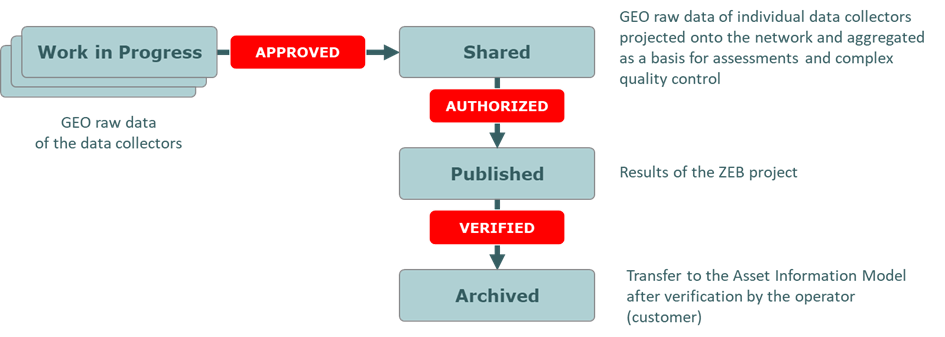
CDE/OnKo is also provided with functions for interactive and synchronized visualization of the pavement condition data. This enables the authorized stakeholders, especially the client and the consultant's team, to perform a complex control of the collected raw GEO data at the stage: Work in Progress and especially after their verification and aggregation at the stage Shared. For this purpose, a special visualization of both, the raw data and images was made available online, so that the client's on-site could also contribute to a better control of the data with their knowledge of the local circumstances. Their comments, especially the critical ones that could be entered online in fields provided for this purpose, contribute to the successive building of a knowledge base for the engineering assessment of the interpretation of the surface properties.
Currently, the CDE/OnKo platform is equipped with all the functions that support the consultant in all his specialized tasks, including the procedures for quality control and complex assessment and visualizations.
In the following, the main functions of the CDE/OnKo platform in the ZEB projects are listed.
Archive and knowledge base
On the CDE/OnKo platform, all relevant documents for the subject area of ZEB as well as for the respective ZEB project are made available. This includes, among others, tender documents, rules and regulations and other documents with the status archive.
Documentation of the recording scope
The client determines the scope of ZEB monitoring (so-called ZEB basic data) by specifying the location of the road sections and lanes to be monitored. Since the client may at any time specify deviating regulations or special treatment of individual route sections, his decisions will be communicated to the consultant and documented by him accordingly.
The information on the monitoring order is uploaded to the CDE/OnKo platform and is available for download by the data collectors in the form of lists of relevant route sections, maps and road profiles.
Ongoing control of the monitoring progress
The data collectors are obliged to report at specific time intervals, usually weekly, on which sections data were collected during this period and which parts of the network could not be surveyed for specific reasons (e.g. due to construction sites or other disruptions).
Such information about monitoring progress is stored on the CDE platform, automatically assessed and presented online for the customer in the form of maps and statistics. This type of progress monitoring is considered an essential element of risk management and fulfills the function of an "early warning system" for the case that the data collector's performance should be hindered.
Assessment of the control measurements
The client has the right to let third parties perform the control measurements on certain routes of his choice. The decision on which routes the control measurements are to be performed is the sole responsibility of the client. Sections that have already been recorded as part of the regular monitoring, as can be seen from the monitoring progress, come into consideration.
The results of the regular monitoring and those of the control measurements are imported as GEO raw data into the CDE/OnKo platform and compared by the consultant on the basis of the criteria and tolerance values specified in the ZTV-ZEB-StB. Afterwards, the consultant creates the standardized check report. In case of deviations over the tolerance values, the client takes appropriate decisions to ensure the reliability of the ZEB results.
Data control on the intermediate deadlines and on the final deadline
The data collectors are obliged to transfer the recorded and quality-assured results of the condition monitoring as GEO raw data as well as files with images to the CDE/OnKo platform for the purpose of complex verification at specific deadlines. Alternatively, in the case of larger data volumes, the GEO raw data and in particular the image files can be transmitted to the consultant on a data storage medium and he then imports them onto the CDE/OnKo platform. The client usually orders one or two intermediate deadlines. These correspond, for example, to 20% and 60% of the planned scope of data capture. The interim deadline at the beginning of ZEB (20%) serves as a further element of the "early warning system" to identify risks to the ZEB project in time and minimize their consequences.
The data control includes 2 main steps: the technical and the functional control.
The technical control involves the automatic checking of the formal IT requirements for the formats of the files with GEO raw data and for their required contents. The route images and the surface images are also checked according to the predefined criteria. If the files do not meet the predefined control criteria, the data collectors are requested to correct them and deliver again.
After the positive outcome of the technical control, the prerequisites are given to perform an automatic assessment and to aggregate the GEO raw data to the longer evaluation sections. Subsequently, the raw data and the determined condition quantities and values are visualized for the purposes of the functional (specialist) control. The functional control to achieve the stage shared will be performed by the consultant's staff on the terminal equipment of the CDE/OnKo - platform. In addition, the client's staff has access to the visualization functions and, thanks to their local knowledge, can contribute to the control of the data and, above all, to the interpretation of the damage images. The functionality to visualize the condition data in the Share - stage also by third parties (not only by the consultant) for control purposes was already part of the functionality of the CDE/OnKo platform in the first year of the application (2007) (see Figure 4.3.7.7.2 and Figure 4.3.7.7.3).
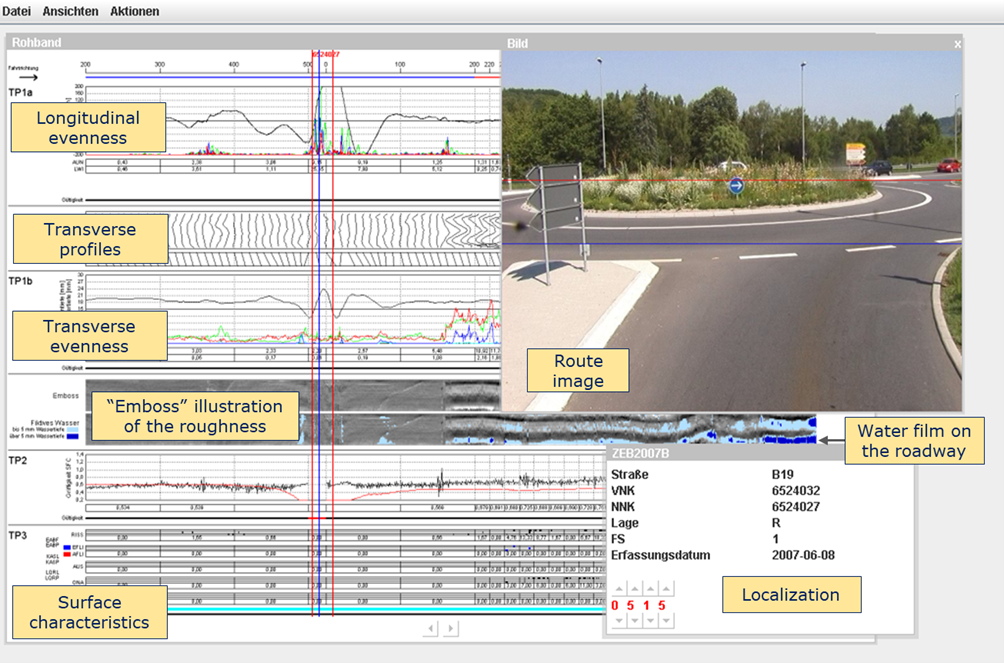
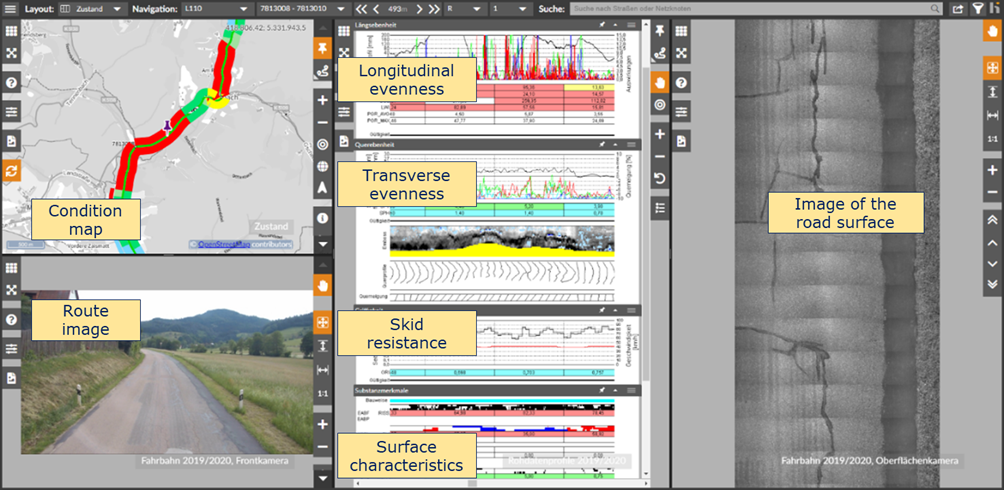
Assessment of pavement condition, statistical analysis and visualization
After the functional control of the data has been positively completed, the final assessment, statistical analysis and visualization of the data on maps and road profiles is performed (see the corresponding examples in Figure 4.3.7.7.4, Figure 4.3.7.7.5, Figure 4.3.7.7.6). The condition data then receive the status: published and can already be used for further, task-related assessments by the client (operator). The CDE/OnKo platform is equipped with all the necessary functions to realize these analytical assessments and visualizations automatically. The results are then made available in the required formats on the CDE/OnKo - platform for downloading by authorized parties, especially the operator's staff. The condition data in the Published status are considered as final results of the respective ZEB project.
The operator (client of the ZEB project) then decides which results of the entire ZEB project are transferred directly into the respective road information database (Asset Information Model) and are awarded the status archive. The verification of the ZEB results by the operator and their transfer into the Asset Information Model can be done outside the CDE/OnKo platform or by using the corresponding functionality of CDE/OnKo.
